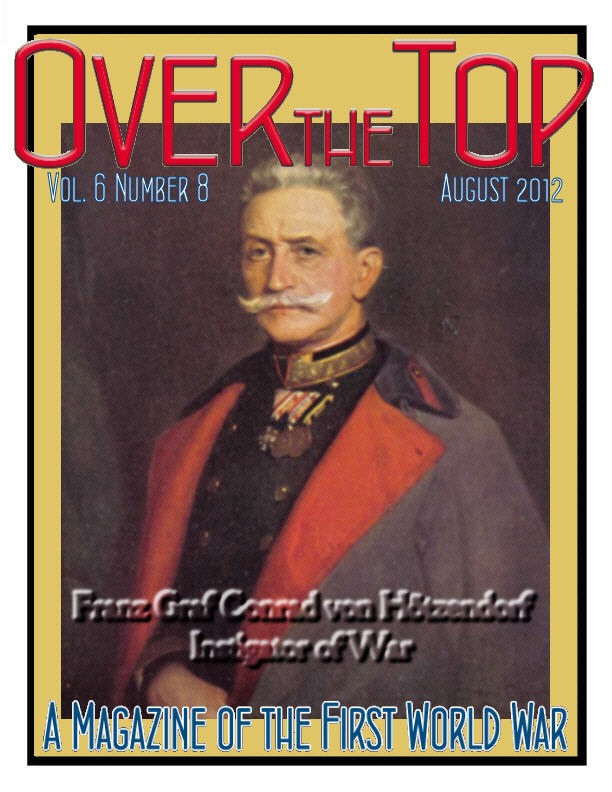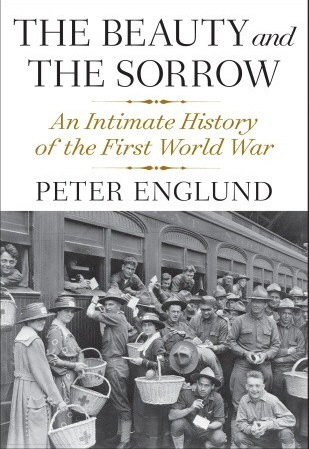


August 1912
American Politics Sets the Stage for an "Irony of Fate"
It would be an irony of fate if my administration had to deal
chiefly with foreign affairs. Woodrow Wilson, 1913
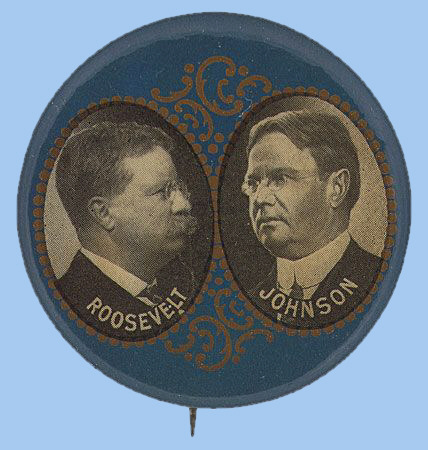
The Progressive Ticket
TR & Hiram Johnson
|
In June 1912, former president Theodore Roosevelt sought the Republican nomination at the convention in Chicago. He was infuriated by what he took to be a betrayal of his progressive program by his personally chosen successor, the incumbent William Howard Taft. The delegates chose Taft anyway, with former New York congressman James "Sunny Jim" Sherman as his running mate. Roosevelt and his supporters bolted, then formed the Progressive Party, popularly known as the Bull Moose Party. [TR: "I am as strong as a bull moose."] At their convention in August, California governor Hiram Johnson was selected as TR's running mate. [One of their campaign managers in Contra Costa County, California, would be your Editor's great uncle, William Hanlon.]
The Democrats were elated by the Republican split, realizing that their opponents' 16-year rule was at an end. The only real suspense was generated around the question of which Democrat would be the next president. Favorite son candidates were put forth from all sections of the country. The strongest appeared to be House Speaker Champ Clark of Missouri, the personal favorite of the influential William Randolph Hearst. Despite widespread support, Clark was unable to gain the necessary two-thirds vote in the early balloting. The turning point occurred when the still influential William Jennings Bryan switched his support to New Jersey governor Woodrow Wilson, an advocate of moderate reform. Bryan would later be appointed Wilson's secretary of state as a reward. After 46 ballots, the exhausted delegates finally selected Wilson and Indiana governor Thomas R. Marshall as his running mate.
Wilson won a lopsided electoral victory in November 1912. His election was nearly assured from the beginning because of the Republican split. Against all his predispositions, he would eventually embrace the role of the nation's war leader, and, later self-designated world shaper.
Material from: U-S-History.com
|
TRENCH REPORT: As usual we have a big selection of World War I items for our readers. There are, however, three matters listed below (with links to more detailed information) I would especially like to recommend: 1) Consider attending the World War One Historical Association's annual seminar in September, which has a great program and a great venue, the Marine Corps University at Quantico; 2) Visit our new center for WWI genealogical researchers, "My Family History & Genealogy," at the Association's new website; and 3) Check out the Battlefield Tour Program for 1913 and the Centennial Tour Program for 2014-2018 I have developed for my parent company, Valor Tours, Ltd. MH
New at Our Own & Our Friends' Great War Websites
Click on Title or Icon to Access
|
News About the World War One Historical Association's Website
For Great War Genealogical Research—For Learning About Your WWI
Family Members
ww1ha.org/Genealogy.htm
Visit our My Family History & Genealogy Webpage.
|
Meanwhile, preparations proceed at full speed for our annual event:
The WW1HA National Seminar
USMC University, Quantico
7-8 Sept. 2012
Contact: Carol Vandenbruhl
email: cvandenbrul@netscape.net
tel: 248-471-2366
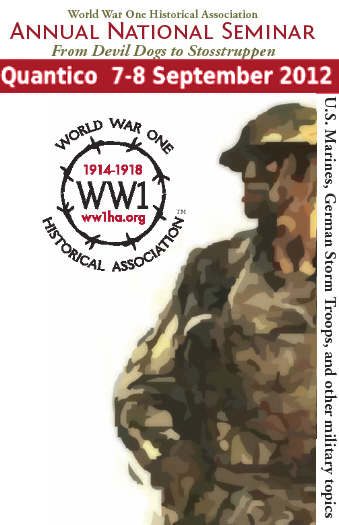
Click on the image above to access full program and registration information.
|
|
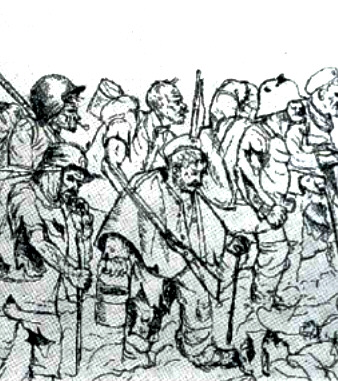
Weary Troops Retreating at the Somme (Detail)
Otto Dix, 1924
This Month's Internet Feature
Notable WWI Prisoners of War
President of France Charles de Gaulle
Soviet Marshal Mikhail Tukhachevsky
Air Innovator Roland Garros
Revolutionary Josip Broz (Tito)
Musical Showman Maurice Chevalier
Aerial Explorer Gunther Plüschow

Readers probably know that France's Unknown Soldier of World War I is buried beneath the Arc de Triomphe in Paris. Where, though, is France's World War II Unknown buried?
Answer: At the ossuary at the Notre Dame de Lorette Memorial in Artois, along with the Unknowns from concentration camps, Algeria, and Indo-China.

I found this interesting comment on Woodrow Wilson in a translation from the journal, Social Sciences in China, May 2010:
In the new context of the rise of United States as a world power, Woodrow Wilson seized the exceptional opportunity offered by American involvement in the First World War and wartime mobilization to reinterpret America's traditions and characteristics, contrasting the US with Germany, the "other." He successfully transformed America's self-image and international role from the "model republic" and "example of freedom" of the nineteenth century to "champion of liberty" and "world leader." Wilson's reshaping of the national identity not only facilitated wartime mobilization but also resolved America's identity crisis and its confusion about the role it was to play after it came on the world stage. In so doing, he identified the long-term direction of national policy for an America that had risen to be a world power. His creative interpretation of America's ideals, role and destiny guided his countrymen in their understanding of the meaning of their country's existence and its relations with the world and became the most influential foreign policy discourse of twentieth century America. This had a far-reaching influence on American foreign policy.
Wang Lixin, "Who Are We? Woodrow Wilson, the First World War and the Reshaping of America's National Identity"
|
|
|
Page Two
|
|
|
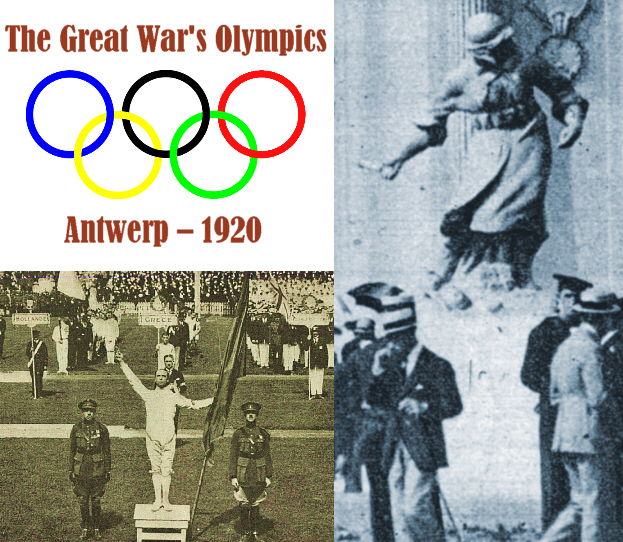
The memory of the recent Great War and an overt militarism pervaded the Antwerp Olympiad. As host, King Albert wore his uniform to every venue. At the stadium entrance where one would expect a sculpture expressing the essence of athletic
competition, something like a hurdler or discus thrower, was a statue of a soldier heaving a grenade. At the opening ceremony, Belgian soldiers ringed the field, and the American contingent was led by a flag bearer in the team uniform of blazer and straw boater accompanied by four officers of the U.S. military. The Olympic Oath—delivered for the first time at Antwerp—was taken by medal winning water poloist and fencer Victor Boin, who had received the Croix de Guerre with Palms (both French and Belgian Croix de Guerre), for having bombed and sunk an enemy submarine in the North Sea, destroying numerous floating mines and rescuing several French aviators. He was supported in the ceremony by two fellow Belgian war heroes. Source: Over the Top, March 2008
|
|
The WWIHA Turns Out in Force for the
The San Francisco Silent Film Festival's Opening Night Featuring
William Wellman's Wings
Reported by Kimball Worcester, Assistant Editor
A good sprinkling of my fellow World War One Historical Association members joined me in the packed, 1400-person crowd at the 12 July opening night of San Francisco's Silent Film Festival, held at the city's last remaining movie palace, the wonderful Castro Theatre.
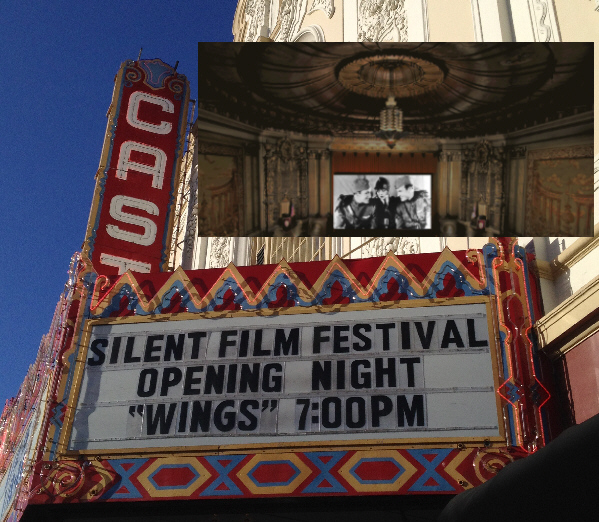
The feature film was that Great War classic and first Academy-Award winner, Wings, which starred (in the "photoshopped" image above) Buddy Rogers, Clara Bow, and Richard Arlen. The director's son, William Wellman, Jr., added some excellent details and commentary, and the musical score was performed superbly by the Mont Alto Motion Picture Orchestra. I spoke to a number of attendees, asking why they attended, and a number expressed a general interest in WWI and also the wish to see the first Academy Award-winning movie, and the debut of Gary Cooper. Cooper of course, appears in a number of films set in the war including Lilac Time, A Farewell to Arms, and Sergeant York.
|
My World War I Expeditions for Valor Tours, Ltd.

Click on Image to Send Email
|
World War I Headlines
in the 21st Century
|
|
|
Subscribe to Our Online Magazine
|
|

|
|
Page Three
|
|
|

Ypres 1914
It was the 1914 fighting around Ypres (First Battle of Ypres) that locked in the Western Front. With the flooding of the coastal zone by the Belgian Army, the "Race to Sea" effectively ended around the town with the standoff that followed the fighting of October and November. TL
|
1914 Fighting at a Canal Near Ypres
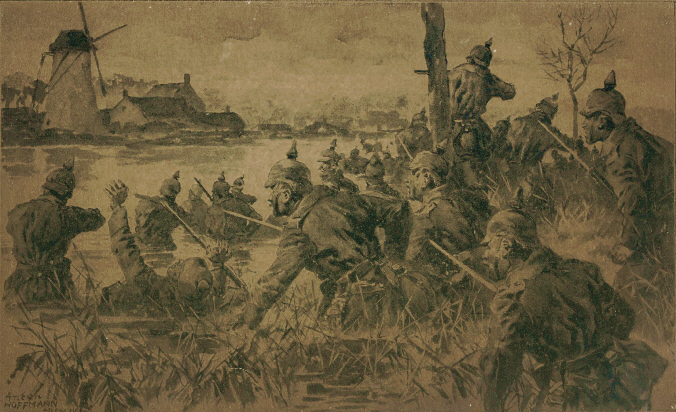
Click Here to access a contemporary account of the fighting around Ypres.
|
|
USMC Informational Plaques at
Belleau Wood
|
A first visit inside the famous Marine Corps battlefield at Belleau Wood is quite disorienting. In the center glade where the main monument and flagpole are located you are enveloped in trees. It's dark and you can't tell directions without a compass. The German positions are not immediately discernible. In 1998 the Marine Corps Basic School took a big step in correcting these issues. They designed and installed a series of large, informational plaques to help the battlefield visitor. They are laid out on the ground along the German front line of 6 June 1918, the battle's opening day. The two examples below show the opposing units and positions at the start and list the Marine and Navy recipients of the Medal of Honor in the ensuing action.
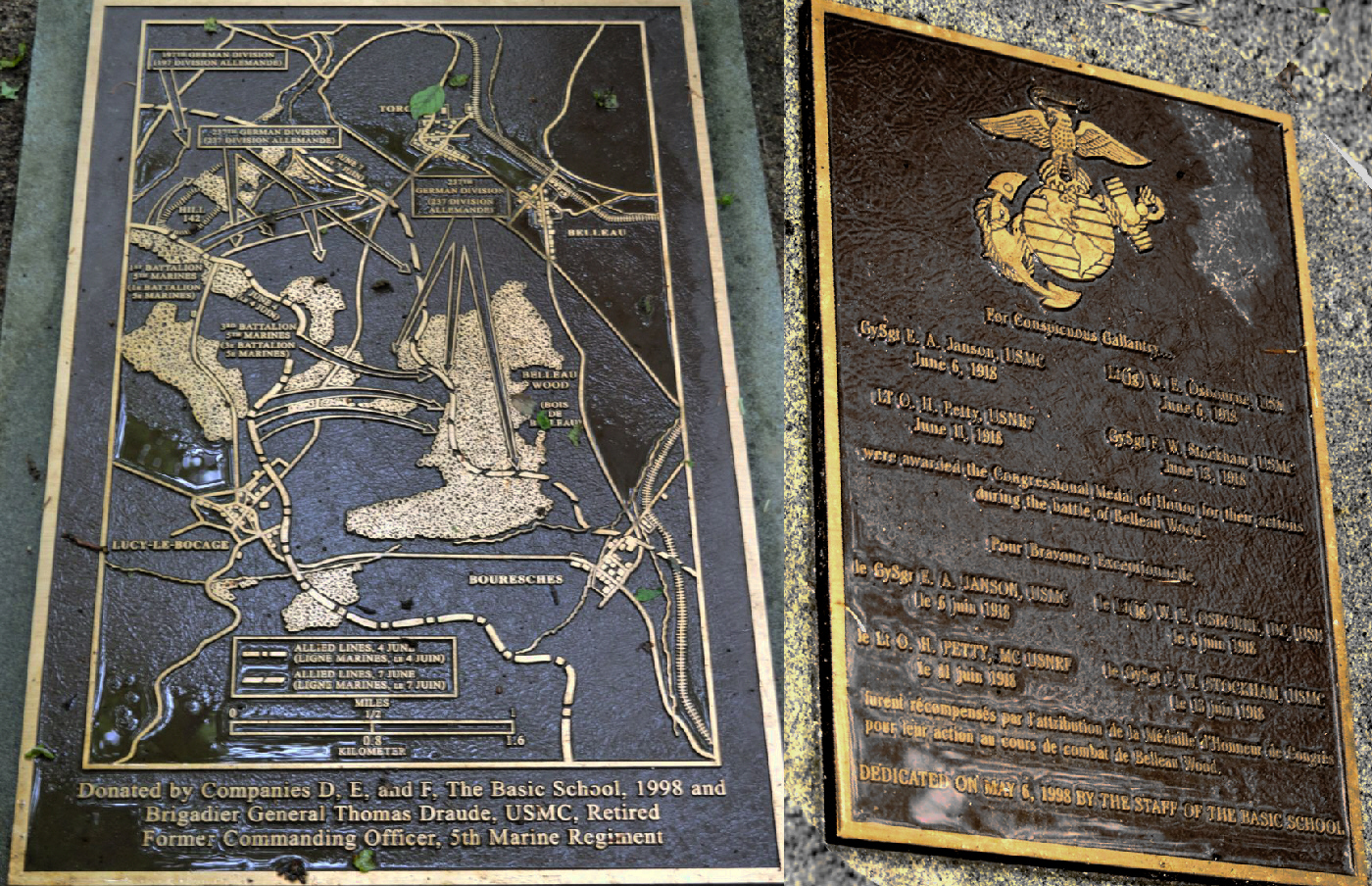
|
The Liberty B Truck
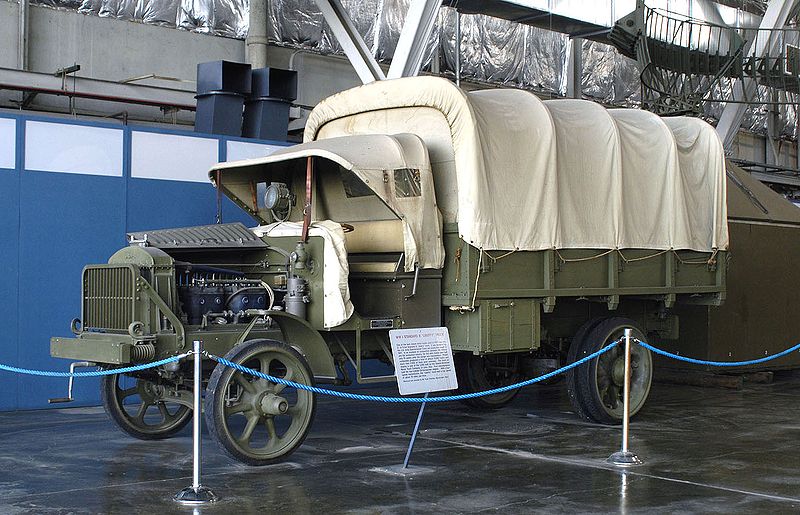
|
As America's war effort ramped up in 1917, there was a collective realization that the fleet of vehicles needed to support a semi-mechanized army needed some standardization. The Liberty truck was the solution. It was designed by the Motor Transport section of the Quartermaster Corps in cooperation with the members of the Society of Automotive Engineers. A group of leading automotive engineers was summoned to Washington in 1917 to design standardized trucks for the AEF. It took took 50 men 69 days to design a 1 ½ ton "A" model and the 3-5 ton "B" model. Production of the Liberty B began in the fall of 1917, and the first models were delivered to the secretary of war on 19 October. Of the almost 9,500 produced by 15 manufacturers, more than 7,500 were sent overseas. The Liberty's four-speed transmission coupled with its 52-hp engine gave the truck a top speed of about 15 miles per hour. Sources: Photo, Wikipedia; Data, American Military Vehicles of World War I by Albert Mroz.
|
|
|
 |
Peter Englund's
The Beauty and the Sorrow:
An Intimate History of the First World War
Reviewed by Sal Compagno
|
|
Peter Englund, Swedish historian (currently secretary of the Swedish Academy, which awards the Nobel Prize in Literature), has written a remarkable and highly readable book about personal views of the First World War. Twenty individuals from the belligerent countries give a vivid expression of how WWI affected them through the four years of the struggle. The author spans the many theaters where the global conflict occurred; Europe is the main focus, but the Middle East and Africa are equally considered. Men, both combatants and politicians, plus many women, are actors on this grand stage whose drama unfolds each year of the war.
Englund does not spare or take sides in his revelation of the war. He comments on what effect the day-by-day progression of the war has on the 20 individuals, and shows the changes in the mental and psychological fabric of each of these individuals. As the conflict proceeds and widens, a young German girl demonstrates her eagerness to assist the war effort in any way but becomes depressed when food and vital materials grow scarce. A young Belgian pilot scores many victories and becomes the celebrated ace of the Belgian forces only to lose a leg in his final battle. A volunteer American doctor sees the horror of battle and the devastating wounds of young soldiers. A volunteer from Hungary finds his fellow soldiers torn by the realities and struggles of battle.
Most of these people are now long forgotten, but Englund has given them a new life in this personal history. From letters, news articles, and documents, he has produced a genuine human view of what war in the 20th century meant and how it altered lives.
The Beauty and the Sorrow: An Intimate History of the First World War, Peter Englund, Knopf, 2011, ISBN: 978-0307593863.
|
|
|
| |









